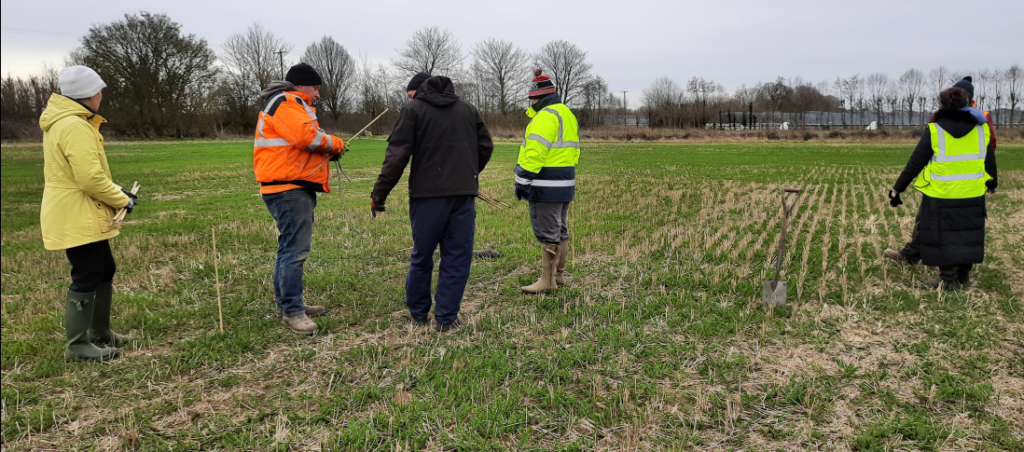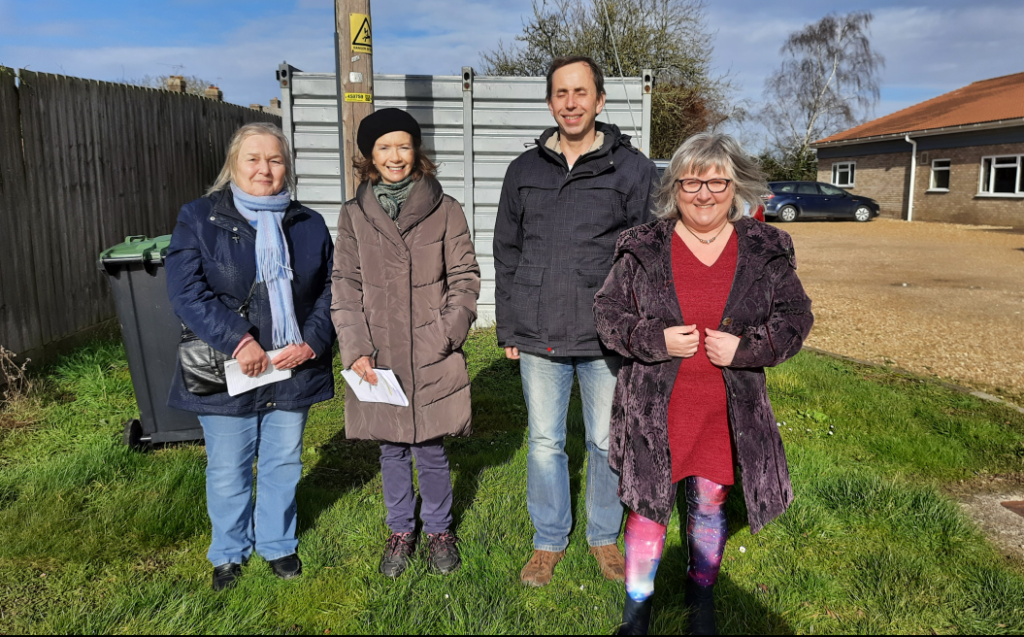Today I proposed the new Climate Change Strategy for Cambridgeshire, which was overwhelmingly agreed, with only three votes against.
“On taking office in May 2021, this Joint Administration committed to put climate change and biodiversity at the heart of this Council’s work.
The updated Strategy referred—unanimously—to this meeting by the Council’s Environment & Green Investment Committee is an ambitious step on that journey.
We are starting from a strong place. In May 2019 this Council, under the administration of members opposite, committed to the development of a Climate Change and Environment Strategy. Following the repeated urging of my colleague Cllr Susan van de Ven this was widened to include declaring a Climate and Environment Emergency.
The first Strategy was adopted by Council in May 2020. It was a crucial first step for the Council to raise the profile of the climate and biodiversity crises in Cambridgeshire. And it recently achieved second place in an analysis of the strategies adopted by County Councils across the UK.
The new Joint Administration set to work early on to initiate a review of the Strategy, with the aim of acting faster to address the climate emergency, and bringing forward targets towards 2030 where they were later than that. We committed to complete that review by December 2021, and indeed on 16 December the Council’s Environment & Green Investment Committee considered the draft of the revised strategy.
Since that meeting, the proposed strategy has been revised to include a definition of Scope 1, 2 and 3 carbon emissions early on; to include non-motorised users, particularly equestrians, in the low carbon transport section of the technical report; and to strengthen communications opportunities, in particular with reference to the Council’s Single Equalities Strategy.
Since the original 2020 Climate Change and Environment Strategy, there have been a number of significant developments at national and international level.
- A commitment to reduce UK greenhouse gas emissions by 78 per cent by 2035 based on a 1990 baseline—reflecting the recommendation from the UK’s Independent Climate Commission Sixth Carbon Budget, and supplementing the existing ‘net zero by 2050’ target, ensuring alignment with the Paris Agreement to keep global temperature rise below 2°C and preferably to 1.5°C.
- The publication of a Heat & Buildings Strategy, Net Zero Strategy, the Environment Act 2021, Agricultural Act 2020, and the Transport Decarbonisation Plan 2021.
- And of course COP26 in Glasgow.
Local authorities across the country are sharing best practice to speed up learning for everyone and turn this into action to reduce carbon emissions. So much learning on climate change has taken place during the last two years, and the review of the Council’s strategy has provided the opportunity to reflect on that learning and make changes according to the latest thinking..
The sixth IPCC Report, published in August last year, described how critical the next ten years will be in the race against the biggest impacts of climate change. COP26 showed for the first time how financial institutions and large organisations are getting behind the transition to a low carbon future, and we are now seeing the impact this can have.
Large companies are really starting to look at supply chain carbon emissions to understand the risks companies are carrying and pushing suppliers to cut emissions. We are also seeing new financial mechanisms such as green bonds being explored and used more commonly.
Locally, the Cambridgeshire and Peterborough Independent Commission on Climate has published its Final Report and recommendations to guide our area to deliver net zero by 2050.
The recommendations of this expert panel highlight the urgency of the action needed, and the increased severity of climate impacts if this action is delayed. They also recognise the importance of protecting the most vulnerable in society, and delivering a just transition to ensure no-one is left behind as we decarbonise our communities, businesses and homes.
Updating our own Climate Change and Environment Strategy is an opportunity to reflect these developments, and to move forward faster and with increased ambition—matching the increased enthusiasm from the public sector, businesses and communities to engage in climate action and speed up change.
Since the May 2020 Strategy the scale and extent of the climate and environment crises have become more apparent as we have seen severe weather impacts here and abroad, and the devastation that results from inadequate action. Public awareness is at an all-time high.
Now is the time to reflect on the learning of the last two years, assess new evidence, and agree an updated strategy that can harness the pace and scale of those changes to minimise the severity of future impacts of climate change on our communities here in Cambridgeshire.
The revised strategy is the product of ongoing dialogue with councillors, officers, our district council partners, the Combined Authority, communities, businesses and the third sector. A series of webinars and meetings has helped to share understanding of the issues and integrate our proposed actions with those of our partners, while maintaining our own ambition.
The new Joint Administration has taken a new approach. Using the strategy to Increase the pace and scale of carbon reductions in Cambridgeshire requires organisations, businesses, communities, and residents to collaborate and cooperate. Our focus is therefore on
- being clear with communities and business about what is needed and how we are going to do it
- providing reliable and trustworthy information and signposting businesses and communities to good practice
- working together to deliver the recommendations of the Independent Commission on Climate and achieving change at lower cost for everyone in Cambridgeshire
- ensuring ownership of the challenge is apparent in every part of the Council. The strategy has been designed to provide a framework within which all Council activities can sit—a structure for officers and members to develop activities within services that fit into the wider net zero ambition.
We have also restructured the proposed strategy to consist of three parts.
- Firstly, a high level strategy summarising our ambition and approach, providing the framework to manage the changes we face, and intended for the wider public, businesses, and partners.
- Secondly, a technical report for those that want or need greater detail on targets and priorities to inform their work.
- And thirdly, a dynamic action plan which guides the actions needed to deliver the strategy, and which can be updated in the light of fresh information and further developments.
These elements of the strategy will be supported by additional documents.
- The Annual Carbon Footprint report we saw in January.
- A Communications and Engagement Plan.
- And a Net Zero & Improving Nature Programme & Resourcing Plan.
This strategy now has a new ambition for Cambridgeshire as a county to reach net zero emissions by 2045 through mobilising action to attract investment and increase the pace and scale of delivery.
For the council itself our target is to reach net zero by 2030. This is now a whole-Council endeavour—all services will need to build knowledge and skills to deliver carbon emission reductions.
Over half of the carbon reductions we need to achieve depend on the choices communities and businesses make in their everyday lives—heating buildings, travelling to work or leisure, buying food and clothing. The strategy therefore focuses heavily on the need for the Council, and others, to engage, support and collaborate widely, inspiring ourselves and others to make positive change.
There is much to do, and a need to do it urgently. It will cost less if we take action early, and more if we delay.”









